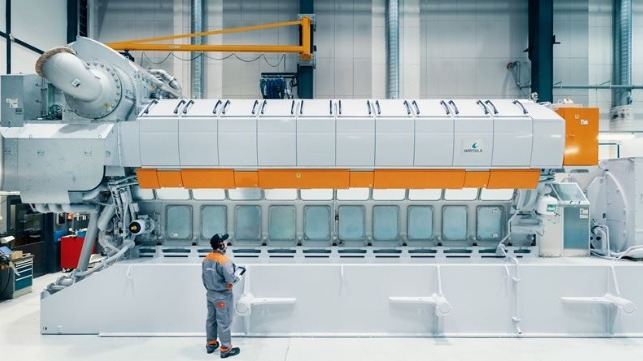The technology company Wärtsilä is signing up for a leading role in a new Norwegian carbon capture and storage research project. The new LINCCS (Linking Carbon Capture and Storage) consortium brings together industry and academic partners with experience in CCS to develop mature solutions, and it will benefit from $13 million in funding from the Norwegian government’s Green Platform Initiative.
One of the major components of the project is the development of a maritime CCS solution, and Wärtsilä Exhaust Treatment will be leading this element, with support from the Sustainable Energy Catapult Center and SINTEF Energy. Wärtsilä Exhaust Treatment is the industry’s largest provider of scrubbers, and it says that its expertise will be of particular use in leading the CCS project.
The project will see Wärtsilä expand its exhaust treatment engineering facility in the town of Moss, Norway to accommodate the R&D work. Once the technology has matured in shoreside testing, it will be piloted in full scale on a vessel.
“The transition towards zero emissions will require us to pioneer a number of different technology solutions in combination, and to do this in close cooperation with key partners. We are humbled and excited to be working with a strong group of companies who all have market-leading competencies to advance CCS as a solution that can enable a low-carbon future,” said Tamara de Gruyter, President of Marine Systems at Wärtsilä.
The broader LINCCS project is focused on reducing costs for new carbon storage facilities by 70 percent and advancing the development of carbon capture technologies in a wide range of sectors. It includes cross-industry CCS developments from a range of partners, including Aker Solutions, Cognite, AGR, Wintershall Dea, Vår Energi, Lundin, Equinor and TotalEnergies.
Wärtsilä has been working with SINTEF on carbon capture systems through their joint CCShips program for some time. It is not alone in pursuing CCS solutions for shipping: Mitsubishi, Teco 2030, Alfa Laval, ANDRITZ and others have announced parallel initiatives.
“Building on the success of existing and well-proven technologies, such as scrubbers, will be vital to succeeding on the industry’s decarbonization goals,” said Sigurd Jenssen, Director of Exhaust Treatment at Wärtsilä. “Exhaust gas abatement technologies have reached a point of maturity where it is only right that we explore their wider applications beyond sulphur compliance.”
Source: The Maritime Executive





